Related Research Articles

A cancellation is a postal marking applied on a postage stamp or postal stationery to deface the stamp and to prevent its reuse. Cancellations come in a huge variety of designs, shapes, sizes, and colors. Modern cancellations commonly include the date and post office location where the stamps were mailed, in addition to lines or bars designed to cover the stamp itself. The term "postmark" refers specifically to the part that contains the date and posting location, but the term is often used interchangeably with "cancellation" as it may serve that purpose. The portion of a cancellation that is designed to deface the stamp and does not contain writing is also called the "obliteration" or killer. Some stamps are issued pre-cancelled with a printed or stamped cancellation and do not need to have a cancellation added. Cancellations can affect the value of stamps to collectors, positively or negatively. Cancellations of some countries have been extensively studied by philatelists, and many stamp collectors and postal history collectors collect cancellations in addition to the stamps themselves.

Postal history is the study of postal systems and how they operate and, or, the study of the use of postage stamps and covers and associated postal artifacts illustrating historical episodes in the development of postal systems. The term is attributed to Robson Lowe, a professional philatelist, stamp dealer and stamp auctioneer, who made the first organised study of the subject in the 1930s and described philatelists as "students of science", but postal historians as "students of humanity". More precisely, philatelists describe postal history as the study of rates, routes, markings, and means.
This is a survey of the postage stamps and postal history of Iraq. It includes special uses under the Ottoman Empire as well as occupation issues.

James Alexander Mackay was a prolific Scottish writer and philatelist whose output of philatelic works was rivalled only by Fred Melville. He was described by John Holman, editor of the British Philatelic Bulletin, as a "philatelic writer without equal" but his reputation was damaged by a conviction for theft from the British Museum early in his career, which cost him his job there, and multiple accusations of plagiarism.
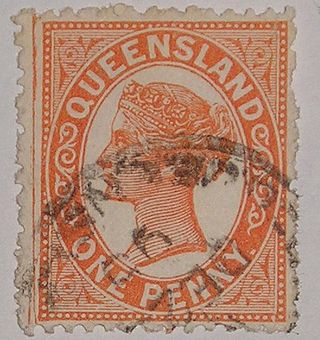
In philately, a forerunner is a postage stamp used before a region or territory issued stamps of its own. The term also includes stamps of the political predecessors of a country. For instance stamps of the state of Western Australia are forerunners of Australia today and stamps of the British Mandate for Palestine are forerunners of modern Israel.

Aden is a city in southern Yemen. Aden's location made it a popular exchange port for mail passing between places around the Indian Ocean and Europe. When Captain S. B. Haines of the Indian Marine, the East India Company's navy, occupied Aden on 19 January 1839, mail services were immediately established in the settlement with a complement of two postal clerks and four letter carriers. An interim postmaster was appointed as early as June 1839. Mail is known to exist from 15 June 1839, although a regular postmaster was not appointed until 1857; one of the officials of the Political Agent or the civil surgeon performed the duties of postmaster for a small salary.
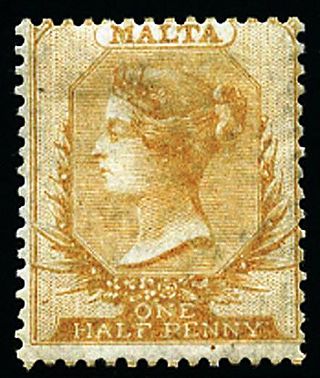
The postal history of Malta began in the early modern period, when pre-adhesive mail was delivered to foreign destinations by privately owned ships for a fee. The earliest known letter from Malta, sent during the rule of the Order of St John, is dated 1532. The first formal postal service on the islands was established by the Order in 1708, with the post office being located at the Casa del Commun Tesoro in Valletta. The first postal markings on mail appeared later on in the 18th century.

The postage stamps and postal history of Israel is a survey of the postage stamps issued by the state of Israel, and its postal history, since independence was proclaimed on May 14, 1948. The first postage stamps were issued two days later on May 16, 1948. Pre-1948 postal history is discussed in postage stamps and postal history of Palestine.
The postage stamps and postal history of Palestine emerges from its geographic location as a crossroads amidst the empires of the ancient Near East, the Levant and the Middle East. Postal services in the region were first established in the Bronze Age, during the rule of Sargon of Akkad, and successive empires have established and operated a number of different postal systems over the millennia.
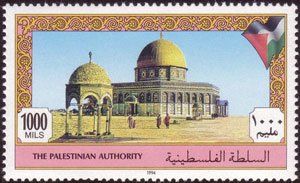
The Palestinian National Authority began in 1994 to issue stamps and operate postal services as authorized by the Oslo Accords.

Edward Wilfrid Baxby (Ted) Proud was a British postal historian, philatelic writer, and philatelic dealer who signed the Roll of Distinguished Philatelists in 2008.

This is a survey of the postage stamps and postal history of Jordan, formerly Transjordan.
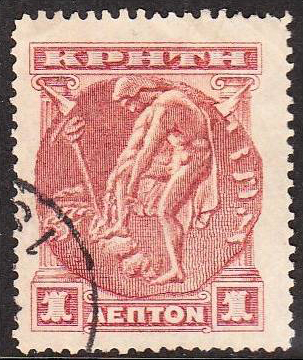
This is a survey of the postage stamps and postal history of Crete.

This is a survey of the postage stamps and postal history of the Niger Territories, an area between the Forcados and Brasse Rivers, once administered by the Royal Niger Company but now part of modern Nigeria.
Harry Sacher was a British businessman, journalist, and Zionist leader. He was appointed director of Marks & Spencer in 1932.

Coded postal obliterators are a type of postmarks that had an obliterator encoded with a number, letter or letters, or a combination of these, to identify the post office of origin. They were introduced in the United Kingdom of Great Britain and Ireland in 1843, three years after the first stamp was issued. They became common throughout the nineteenth century but very few remained in use until the twentieth century.
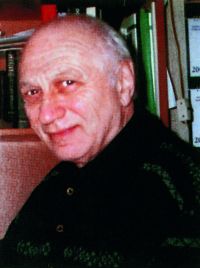
Manfred Dobin (1925-2015) of St. Petersburg, was a stamp dealer and auctioneer, and philatelic expert on Imperial postmarks, 1750-1858 of Russia. Dobin became a member of the Association Internationale des Experts en Philatéle, AIEP in 1995. He was also a member of the Expert Council on Russian Philately from 1991.

Michael Moses Sacher FRPSL was an executive with British retailers Marks & Spencer including holding the positions of joint managing director and joint vice-chairman. He was closely associated with Jewish causes throughout his life and in his spare time was a noted postal historian of Palestine and a fellow of the Royal Philatelic Society London.
References
- Header Notes
- Notes
- ↑ Proud, 2006, p. 14.
- ↑ Baker, 1992, p. 187.
- 1 2 Sacher, 1995, p. 475.
- 1 2 3 4 5 6 7 8 9 Dorfman, 1985, p. 36.
- ↑ Proud, 2006, p. 135–136.
- 1 2 3 4 5 Sacher, 1995, p. 476.
- ↑ Proud, 2006, p. 139.
- ↑ Proud, 2006, p. 137–138.
- ↑ Proud, 2006, p. 142.
- ↑ Proud, 2006, p. 143.
- ↑ Proud, 2006, p. 143–144.
- ↑ Proud, 2006, p. 158.
- 1 2 3 4 Sacher, 1995, p. 477.
- 1 2 Proud, 2006, p. 144.
- 1 2 3 4 5 6 7 8 9 10 Dorfman, 1985, p. 41.
- ↑ Proud, 2006, p. 145–146.
- 1 2 Proud, 2006, p. 147.
- 1 2 3 4 Sacher, 1995, p. 480.
- 1 2 3 Sacher, 1995, p. 478.
- ↑ Proud, 2006, p. 148.
- 1 2 3 4 5 Sacher, 1995, p. 479.
- 1 2 Proud, 2006, p. 149.
- ↑ Proud, 2006, p. 150.
- ↑ Proud, 2006, p. 150–151.
- ↑ Proud, 2006, p. 151.
- ↑ Proud, 2006, p. 153.
- 1 2 3 4 5 6 7 8 Dorfman, 1985, p. 47.
- ↑ Proud, 2006, p. 153–154.
- ↑ Proud, 2006, p. 155.
- 1 2 Proud, 2006, p. 156.
- 1 2 3 Sacher, 1995, p. 481.
- ↑ Dorfman, 1985, p. 47, 72.
- ↑ Proud, 2006, p. 239.
- 1 2 Proud, 2006, p. 157.
- 1 2 3 Sacher, 1995, p. 482.
- 1 2 Proud, 2006, p. 164.
- 1 2 3 4 5 6 7 8 Dorfman, 1985, p. 52.
- ↑ Proud, 2006, p. 165–166.
- 1 2 3 4 5 Sacher, 1995, p. 483.
- ↑ Proud, 2006, p. 166–167.
- ↑ Proud, 2006, p. 167.
- 1 2 Proud, 2006, p. 168.
- ↑ Proud, 2006, p. 169.
- 1 2 Sacher, 1995, p. 484.
- ↑ Proud, 2006, p. 169–171.
- 1 2 Sacher, 1995, p. 159.
- 1 2 Goldstein & Dickstein, 1983, p. 4.
- ↑ Sacher, 1995, p. 160–170, 177.
- ↑ Proud, 2006, p. 173–185.
- ↑ Goldstein & Dickstein, 1983, p. 5–15.
- 1 2 3 Sacher, 1995, p. 179.
- 1 2 Proud, 2006, p. 187.
- 1 2 3 Goldstein & Dickstein, 1983, p. 13.
- 1 2 3 4 Goldstein & Dickstein, 1983, p. 14.
- ↑ Proud, 2006, p. 188.
- 1 2 3 Sacher, 1995, p. 180.
- ↑ Proud, 2006, p. 189.
- ↑ Proud, 2006, p. 189–190.
- ↑ Goldstein & Dickstein, 1983, p. 11–12.
- ↑ Proud, 2006, p. 190.
- 1 2 3 4 Sacher, 1995, p. 181.
- 1 2 Proud, 2006, p. 191.
- ↑ Goldstein & Dickstein, 1983, p. 12.
- ↑ Proud, 2006, p. 193.
- ↑ Proud, 2006, p. 194.
- ↑ Proud, 2006, p. 195.
- 1 2 3 4 Sacher, 1995, p. 485.
- 1 2 3 4 5 6 7 8 9 Dorfman, 1985, p. 57.
- ↑ Proud, 2006, p. 144, 197.
- ↑ Proud, 2006, p. 197–198.
- 1 2 Proud, 2006, p. 199.
- ↑ Sacher, 1995, p. 210.
- ↑ Goldstein & Dickstein, 1983, p. 40.
- ↑ Sacher, 1995, p. 210–218.
- ↑ Proud, 2006, p. 201–208.
- ↑ Goldstein & Dickstein, 1983, p. 40–45.
- ↑ Sacher, 1995, p. 218.
- ↑ Proud, 2006, p. 211.
- 1 2 Goldstein & Dickstein, 1983, p. 44.
- ↑ Sacher, 1995, p. 224.
- ↑ Proud, 2006, p. 283, 287.
- ↑ Groten, 1988, p. 6.
- 1 2 3 4 Sacher, 1995, p. 486.
- ↑ Proud, 2006, p. 111.
- ↑ Proud, 2006, p. 213.
- ↑ Sacher, 1995, p. 64–65.
- ↑ Sacher, 1995, p. 65–99.
- ↑ Dorfman, 1985, p. 117–134.
- ↑ Proud, 2006, p. 107–126.
- 1 2 3 Sacher, 1995, p. 104.
- ↑ Proud, 2006, p. 214.
- 1 2 Sacher, 1995, p. 103.
- 1 2 Proud, 2006, p. 215.
- ↑ Proud, 2006, p. 216.
- ↑ Sacher, 1995, p. 102.
- ↑ Proud, 2006, p. 216–217.
- ↑ Proud, 2006, p. 217–218.
- ↑ Sacher, 1995, p. 105.
- ↑ Proud, 2006, p. 218.
- 1 2 Proud, 2006, p. 220.
- 1 2 3 4 5 Sacher, 1995, p. 487.
- 1 2 3 4 5 6 7 8 9 10 11 Dorfman, 1985, p. 64.
- 1 2 Proud, 2006, p. 221.
- ↑ Proud, 2006, p. 222.
- 1 2 Proud, 2006, p. 223.
- 1 2 3 4 5 Sacher, 1995, p. 488.
- 1 2 Proud, 2006, p. 224.
- ↑ Proud, 2006, p. 225.
- ↑ Proud, 2006, p. 225–226.
- 1 2 3 4 Sacher, 1995, p. 489.
- ↑ Proud, 2006, p. 226.
- 1 2 Proud, 2006, p. 227.
- 1 2 3 4 5 6 Dorfman, 1985, p. 68.
- ↑ Proud, 2006, p. 228.
- ↑ Proud, 2006, p. 229.
- 1 2 Sacher, 1995, p. 490.
- ↑ Proud, 2006, p. 229–230.
- 1 2 3 4 Sacher, 1995, p. 491.
- ↑ Proud, 2006, p. 230–232.
- ↑ Proud, 2006, p. 233–234.
- ↑ Proud, 2006, p. 234.
- 1 2 3 4 5 6 7 8 9 10 11 Dorfman, 1985, p. 72.
- ↑ Proud, 2006, p. 235.
- ↑ Proud, 2006, p. 158–159.
- 1 2 3 4 5 Sacher, 1995, p. 492.
- ↑ Proud, 2006, p. 236.
- ↑ Proud, 2006, p. 159.
- 1 2 Proud, 2006, p. 237.
- ↑ Proud, 2006, p. 238.
- 1 2 3 4 5 6 Sacher, 1995, p. 493.
- 1 2 Proud, 2006, p. 241.
- ↑ Proud, 2006, p. 242.
- ↑ Proud, 2006, p. 243.
- 1 2 3 4 5 6 7 8 9 Dorfman, 1985, p. 79.
- 1 2 Proud, 2006, p. 244.
- 1 2 3 Sacher, 1995, p. 494.
- ↑ Proud, 2006, p. 245.
- ↑ Proud, 2006, p. 247.
- 1 2 Proud, 2006, p. 248.
- 1 2 3 4 Sacher, 1995, p. 495.
- ↑ Proud, 2006, p. 249–250.
- ↑ Proud, 2006, p. 251.
- ↑ Proud, 2006, p. 255.
- 1 2 3 Sacher, 1995, p. 496.
- 1 2 3 4 5 6 7 Dorfman, 1985, p. 84.
- 1 2 Proud, 2006, p. 256.
- ↑ Proud, 2006, p. 257–259.
- 1 2 3 4 5 Sacher, 1995, p. 497.
- 1 2 Proud, 2006, p. 260.
- ↑ Proud, 2006, p. 261.
- ↑ Proud, 2006, p. 261–262.
- 1 2 3 4 5 6 7 8 9 Dorfman, 1985, p. 89.
- ↑ Proud, 2006, p. 262.
- 1 2 3 4 5 Sacher, 1995, p. 498.
- 1 2 Proud, 2006, p. 263.
- ↑ Proud, 2006, p. 161.
- ↑ Proud, 2006, p. 264.
- ↑ Proud, 2006, p. 265.
- 1 2 3 4 Sacher, 1995, p. 499.
- ↑ Proud, 2006, p. 266.
- 1 2 Proud, 2006, p. 267.
- 1 2 3 4 Dorfman, 1985, p. 95.
- ↑ Proud, 2006, p. 161–163.
- 1 2 3 Sacher, 1995, p. 500.
- ↑ Proud, 2006, p. 268–269.
- ↑ Proud, 2006, p. 269–271.
- ↑ Proud, 2006, p. 273.
- 1 2 3 Sacher, 1995, p. 505.
- 1 2 3 4 5 6 7 8 Dorfman, 1985, p. 101.
- ↑ Proud, 2006, p. 273–276.
- 1 2 3 4 Sacher, 1995, p. 501.
- ↑ Proud, 2006, p. 277.
- ↑ Proud, 2006, p. 278.
- 1 2 Proud, 2006, p. 279.
- 1 2 3 4 5 Sacher, 1995, p. 502.
- 1 2 Proud, 2006, p. 280.
- ↑ Proud, 2006, p. 277–278.
- 1 2 3 4 5 6 Dorfman, 1985, p. 102.
- 1 2 Proud, 2006, p. 281.
- ↑ Sacher, 1995, p. 215–216, 225, 230–233, 250.
- ↑ Proud, 2006, p. 283–297, 303, 305, 307.
- ↑ Groten, 1988, p. 6–19, 27.
- ↑ Sacher, 1995, p. 252.
- ↑ Proud, 2006, p. 301.
- 1 2 3 4 5 6 Groten, 1988, p. 27.
- 1 2 Sacher, 1995, p. 253.
- ↑ Proud, 2006, p. 303.
- ↑ Proud, 2006, p. 303–304.
- 1 2 3 Sacher, 1995, p. 254.
- ↑ Proud, 2006, p. 307.
- 1 2 Proud, 2006, p. 309.
- 1 2 3 Sacher, 1995, p. 503.
- ↑ Proud, 2006, p. 309–310.
- ↑ Proud, 2006, p. 311–313.
- ↑ Proud, 2006, p. 314.
- 1 2 3 4 Sacher, 1995, p. 504.
- ↑ Proud, 2006, p. 314–315.
- 1 2 3 4 5 Dorfman, 1985, p. 107.
- ↑ Proud, 2006, p. 315–316.
- ↑ Proud, 2006, p. 316.
- ↑ Proud, 2006, p. 317.
- ↑ Proud, 2006, p. 317–319.
- ↑ Sacher, 1995, p. 126.
- ↑ Firebrace, 1991, p. 193–199.
- ↑ Sacher, 1995, p. 127.
- ↑ Sacher, 1995, p. 128.
- ↑ Sacher, 1995, p. 510–511.
- ↑ Dorfman, 1985, p. 29, 31.
- ↑ Proud, 2006, p. 323–326.
- ↑ Sacher, 1995, p. 511.
- ↑ Dorfman, 1985, p. 30–31.
- ↑ Proud, 2006, p. 326–327.